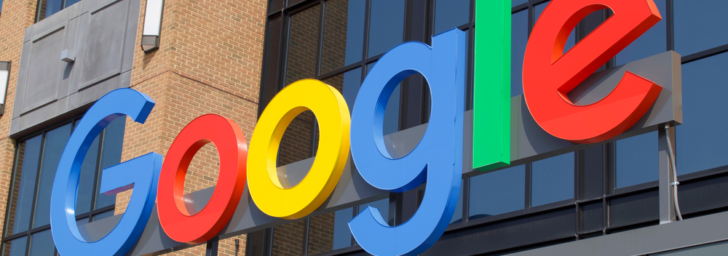
The payday loans algorithm continues to challenge search engine optimization (SEO) practitioners across the world, notably in the US and UK – the two largest markets for payday loans.
In 2012, UK’s payday loan market was worth around £2 billion and was so sought after that Google’s entire first page for payday loans was dominated by black hat results.
In response, the tech giant created a dedicated algorithm – which was revised in 2018 – known today as ‘payday loans 2.0’. The purpose of the algoritm was target what Google deemed “spammy queries”; never before had Google devoted an entire algorithm for one particular product or service.
The payday loan market in the UK is now heavily regulated and no longer as lucrative. But SEO professionals looking to help promote payday loan companies are still hoping to land on a search engine’s first page in order to access very high converting products with over 100,000 monthly searches.
Drawing on Tudor Lodge’s findings from the 2019 and 2021 algorithm, we look at how the payday algorithm has developed in the UK and US, and what techniques are succeeding in 2022.
Frequency of updates
Payday loan companies looking to rank their sites higher on search engines may fine they are struggling to make progress, even with the help of SEO practitioners. When this progress will appear, may also seem uncertain.
In the UK, Google infrequently updates its SEO algorithm which means a company with ‘good’ SEO could result in it ranking highlight for months or even a year, without having to change very much. This means companies can ‘ride the wave’ of their previous good SEO work.
There is an age-old SEO assumption that Google takes the techniques used by websites on page 1 of its search and uses these techniques as the basis for the algorithm. Therefore, companies which copy the links and style of content of page 1 should be successful.
In the US, however, the frequency of SEO changes for payday loans is significantly quicker, with the search results changing far more regularly and competitors having to be consistent to maintain those results.
This could reflect the more competitive environment in the US and how state-specific lenders, such as those from Florida or Ohio, might suddenly start to rank higher due to demand in those areas.
Role of exact match and partial match domains
Traditionally, having the word ‘payday’ in a business’ domain name was a strong ranking signal to secure a page 1 position, but this seems to be less relevant as time goes on.
Filtering by the UK’s geography, only one website appears on Google’s Page 1 search results page with the word payday in the businesses’ domain name; it is one of the oldest payday lenders in the market. The same occurs when filtering for the US market, only in this instance, the firm has used a black hat technique.
As a result, companies looking to set up a website in this market do not need to include the word ‘payday’ within their domain name to be successful.
Popular techniques and red flags
There are a couple of techniques, however, which will stand businesses looking to gain traction in the payday loan market in good stead.
- Careful phrasing is one of these techniques. Companies looking to improve their payday loan SEO should look carefully at the phrasing used by websites which rank on page 1 in the UK and US.
These websites tend to use the following terms: “direct lenders”, “bad credit”, and “alternatives”. Other popular phrases include payday loans online used by Dime Alley and include the word “instalment”.
Tudor Lodge’s previous investigation into the algorithm suggests these phrases push websites up the ranking because Google wants to: provide “alternatives” rather than expensive payday products; ensure “direct lenders” are promoted over brokers; and appeal to “bad credit” which is the real use of the product.
- Another technique to be considered is the use of Google Business, a free service which allows organizations to manage and optimize their businesses’ profile on Google. In recent years, the platform has gained more exposure in the SERPs for payday loans.
Arguably this is not surprising since figures show Google Business clicks are surpassing normal clicks on Google for the first time ever this year. This is particularly relevant in the US where there are over 23,000 payday stores and the role of local listings is far more important than in the UK where the industry is mainly online.
For SEO practitioners, having a populated Google Business account with images, descriptions and organic reviews will only help to secure more exposure and clicks, even for new entries.
And of course, making sure the address and contact details on your website are very clear on the footer and contact us page. Without any contact details or address on your website, you are pretty much a ghost in Google’s eyes.
- Another important detail for SEO practitioners and payday loan companies to think about is ensuring there is an explanation of how their product works. Customers need to know how to apply for a payday product listed on a website.
Websites listed on Page 1 of Google’s listings all ensure this copy is clear and concise, whether it be through a steps process – as demonstrated by Pheabs – or a dedicated ‘how it works’ page.
In addition to best practice, there are a number of techniques which are now grossly out of fashion.
- Long content and landing pages are one example. Whilst I personally have always been a fan of long content, and nice strong landing pages, there are several strong examples on Google’s Page 1 which seem to defy this.
These websites, some with limited content (but a strong backlink profile) and others just including a ‘how it works’ page and some strong FAQs on their homepages, have managed to maintain their top spots. This might suggest backlinks are stronger than content in this market.
- Another faux pas is having multiple pages on a payday website. It could be assumed that having pages dedicated to each product, service and question would help the consumer journey, the sites that have multiple pages have declined and been penalized in 2021. This suggests companies should approach their website through the lens of having one, focused page which discusses different locations on said.
Where do links fall into this algorithm?
Links are always so vital for SEO, and Tudor Lodge’s studies show that acquiring links is likely to make a company’s website rank quicker in in the payday market, than adding more content would.
The role of PBNs is still evident with SEO professionals buying links and this is having a positive correlation on rankings, unless hit with a penalty. Some of the best ranking sites can leverage links from ‘gov.uk’ and ‘.edu’ by offering sponsorships and associating with good causes.
Long SEO articles on third party sites
Finally, there has been a surge in the US of companies who are ranking third party articles, rather than individual sites.
The SEO professional is writing very long and detailed pieces about payday loans and including lots of relevant keywords such as “no credit check” and “bad credit” – then listing their 4 or 5 favourite sites or clients in the text to generate leads.
Using third party sites, often regional or state press sites with domain authorities of 80 or higher, ensures these articles rank well and gains instant exposure via Google News. This technique is often underrated by the industry but has gained a lot of visibility in recent years.
It is innovative and well executed and essentially just SEO by any other name.







